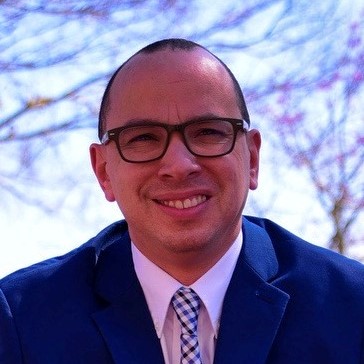As we gear up to begin a new school year, we cannot help but hear the many voices involved in the process of opening our schools. With decisions being made by politicians, education state officials, health officials, and district and school administrators, it is no wonder that teachers and families whose voices are usually not represented are confused and angry. We keep hearing the same hopeful message exemplified in these words: “I hope we can go back to normal soon.” The problem is that what most people consider “normal” is actually a harsh struggle for social justice in many communities of color. If we go back to the same system—the old normal—we would continue to condone inequities within our schools.
When people refer to the old “normal”, I cannot help but think about the fact that teachers of color are but a small percentage of teachers within many districts and how students of color are not able to see themselves in those who are teaching them. But, let me be a little more specific about how this old “normal” plays out for Latinx communities. In many schools, even in those where there is a bilingual program, there are no Latinx administrators. This creates a gaping divide between the school and the parents, as Latinx parents see no representation and many times feel left out of the school community. At the same time, this creates extra responsibility for the few Latinx teachers within the school who are seen by the parents as the only mechanism to voice their opinions and ideas. Furthermore, this lack of Latinx representation within administrators and other professional staff creates a language divide for Latinx students and their needs (e.g. counselor, Sp.Ed. needs, among others). Our Latinx students do not have the same access to the same resources other students have, such as Special Education or GT specialists that understand their first language and offer the services they need.
When I refer to the language divide, I am not merely referring to the lack of translated materials. When I speak of language, I refer to the construct that encapsulates our dreams, culture, traditions, ideas and our purpose as people. Marisol, a student who came as a refugee from Venezuela, recently reminded me of the power of language. After learning English she always hesitated to actually speak it. I asked her about it, knowing that her English was better than acceptable. She told me: “Yo hablo inglés sólo con los que no hablan español por que en esos momentos estoy en su mundo y con sus reglas. Usted es parte de mi mundo y con usted no tengo que esconder quién soy, detrás del idioma.” (“I speak English only with those who do not speak Spanish because I am in their world and with their rules. You are part of my world and with you I do not need to hide behind a language.”) As Marisol experienced, whenever we speak in Spanish our own sense of self is exposed. Metaphorically speaking, English cannot fully grasp our culture, our past and our tradition. Hence, I argue that the lack of representation of Latinx voices, ideas and purpose creates that language divide. If we are to go back to the old “normal”, that is the world we are exposing our Latinx students and other students of color to.
As the pandemic has accentuated, there are many divides within our educational system—technological, racial, socioeconomic, among others. It has also accentuated the fact that schools in many cases have become the providers of services that otherwise would be absent from the community due to financial, cultural, linguistic and other barriers. These are not revelations to teachers, as we are in the front-line on the education system. So, in order to come out stronger from this crisis, schools need to become, not simply an intrinsic part of the community, but the center of the community. This can only happen when we recognize that our communities are always in flux and thus our schools also need to be in constant transformation in order to not just represent the community but to also have the tools to address the needs of that community. In order to achieve this, we need to dismantle the “old normal,” and build something new.
In the past months, school leaders have expressed the need to focus on the task at hand: opening schools, getting students computers and hot spots, and re-invent the curriculum for virtual learning, among other things. We have to supply the resources students need for the upcoming year, but we also need to address the inequities that lie within our education system. How do we do this? Of course, we have to address issues of representation within districts and schools in order to have teachers of color at the table. But, in order to retain teachers of color and address the needs of students of color, we have to transform the school/district’s culture and climate:
Over the summer, an administrator told me: “Dr. Martínez, this is not the time to tackle these issues because we are busy dealing with the emergency. Maybe, later.” Now, this lame excuse is not new as it has been used throughout the years to stop revolutions and defend the status-quo (the “normal”). But, this administrator cannot be farther from the truth, as this is the right time to do it and enact real change. This is the right time to re-think our present systems and revolutionize education towards equity. What we need is a coherent plan and we need teachers of color to be at the forefront of implementing it.
Dr. Hjamil A. Martínez-Vázquez is a Bilingual Teacher at J.A. Hargrave Elementary School Crowley, Texas and Teach Plus Senior Policy Fellow. Dr. Martínez-Vázquez works on issues of representation and racial/ethnic equity within education.

